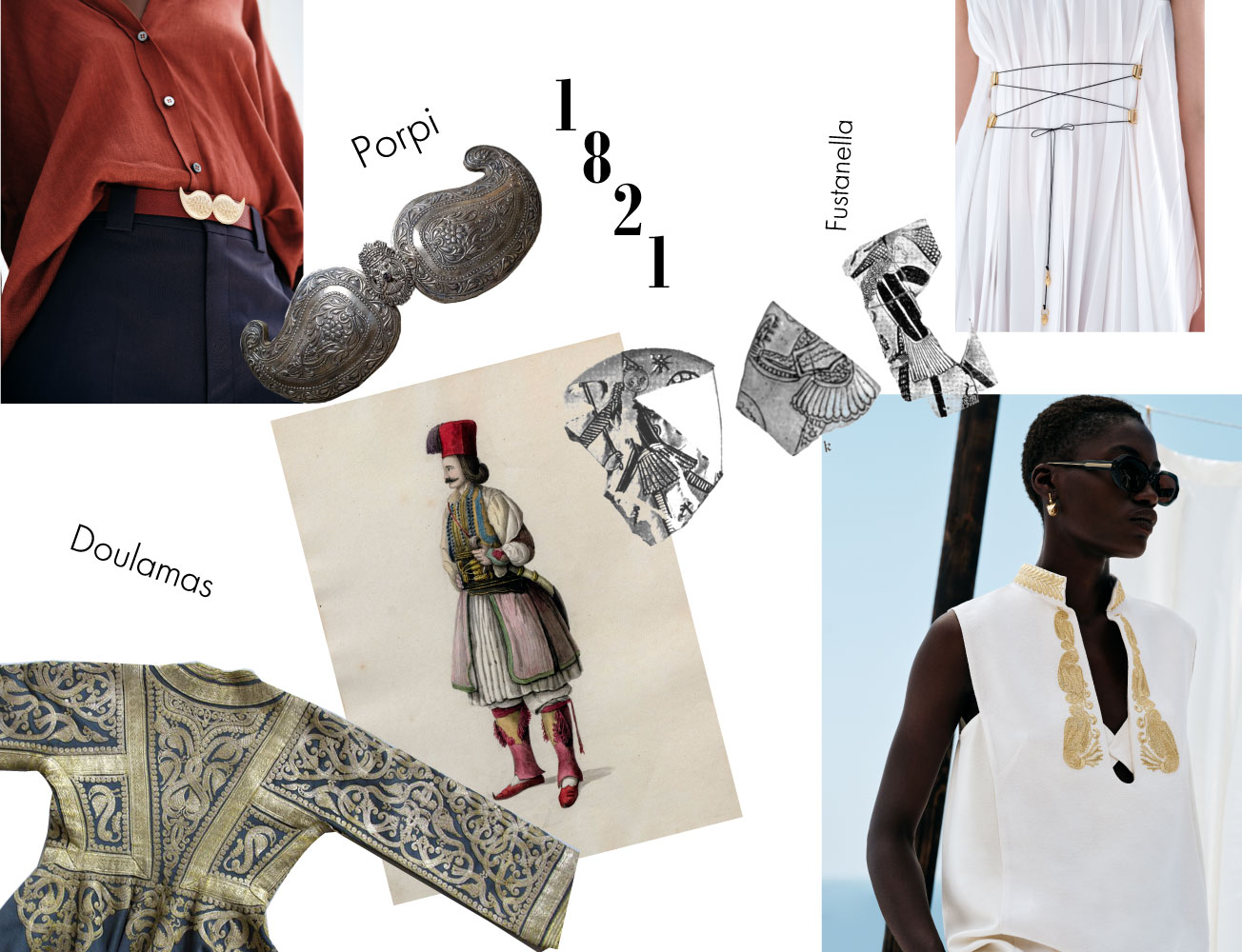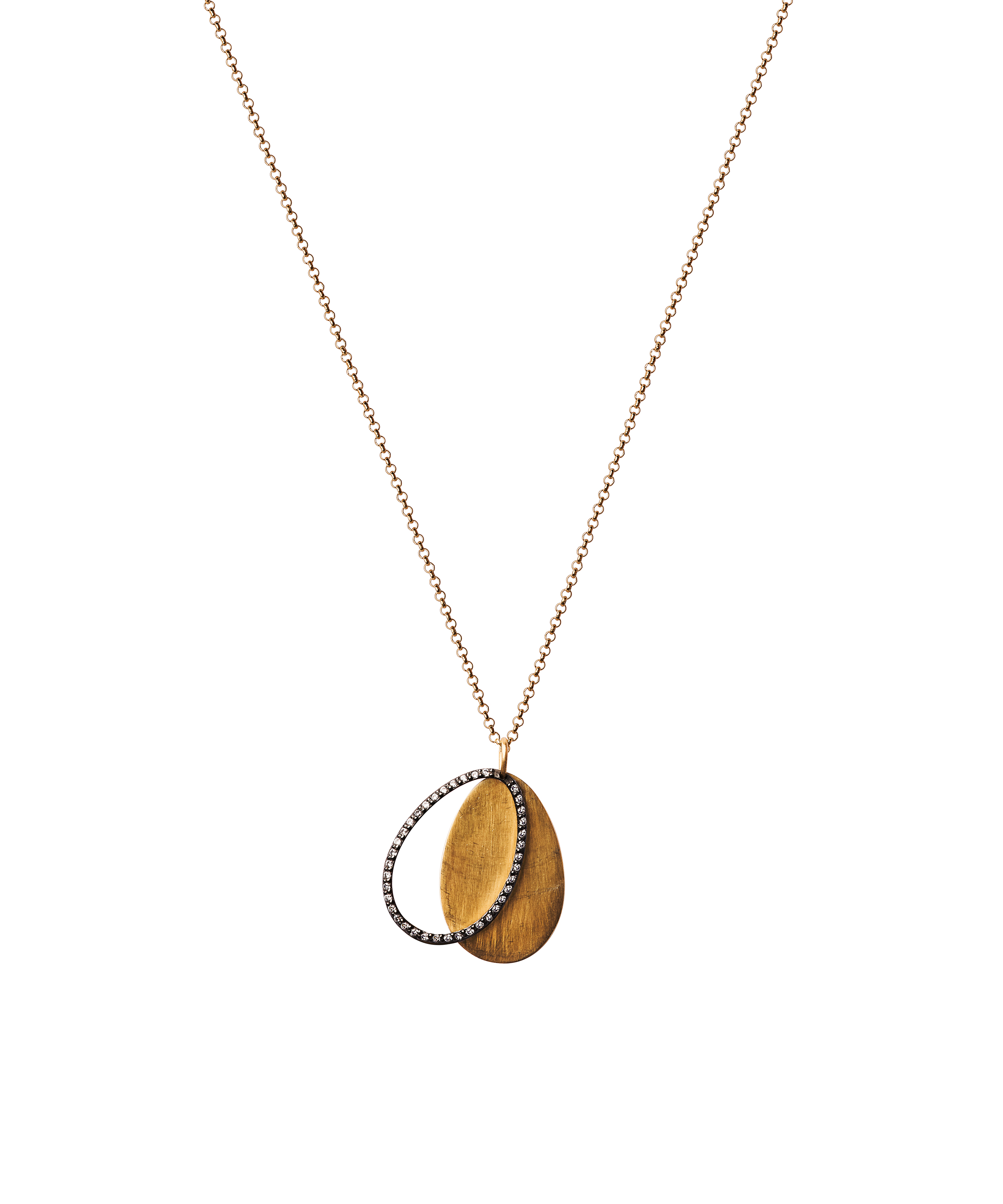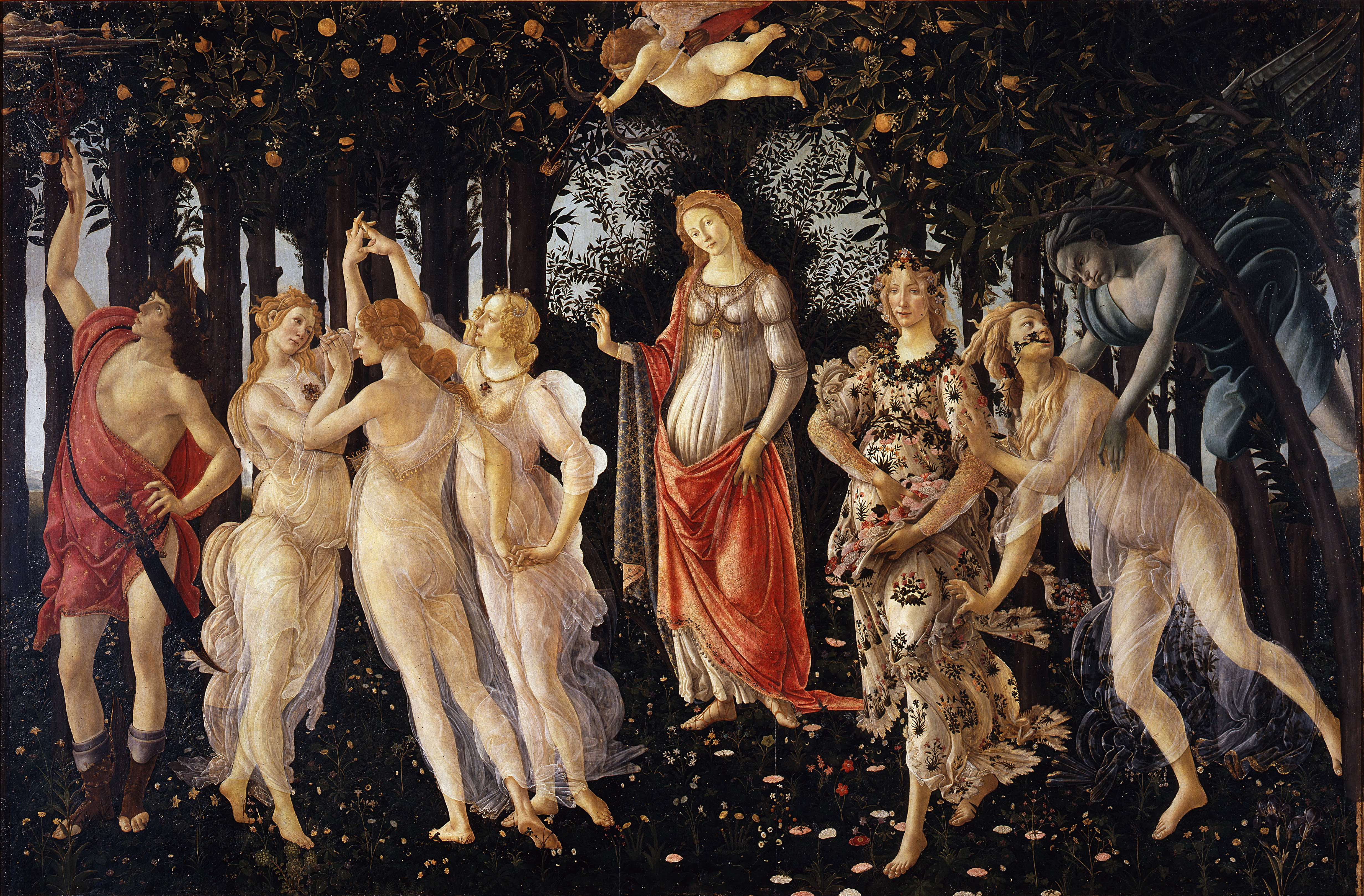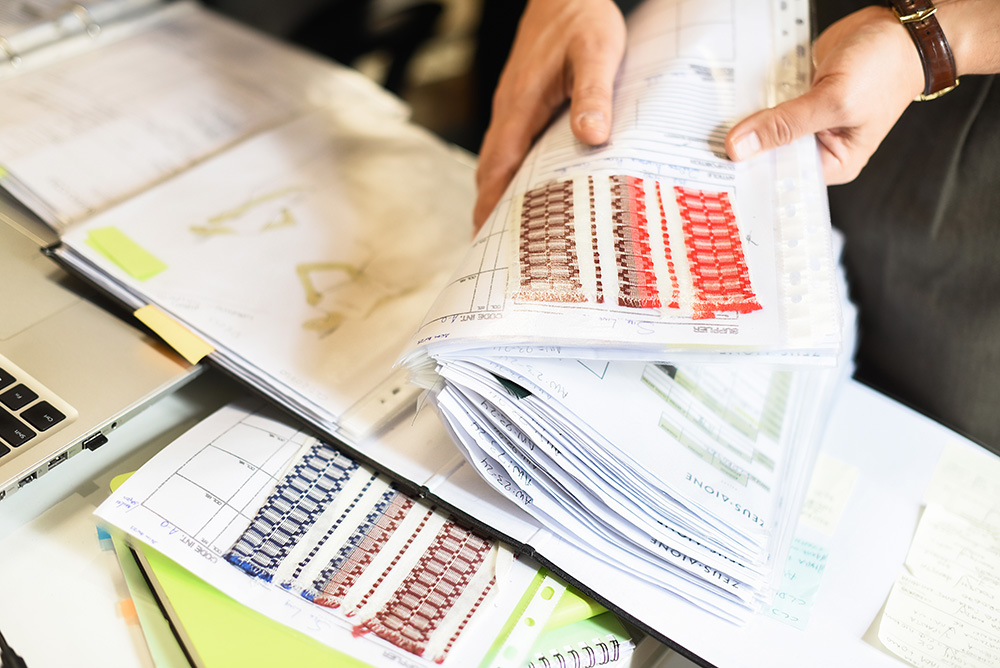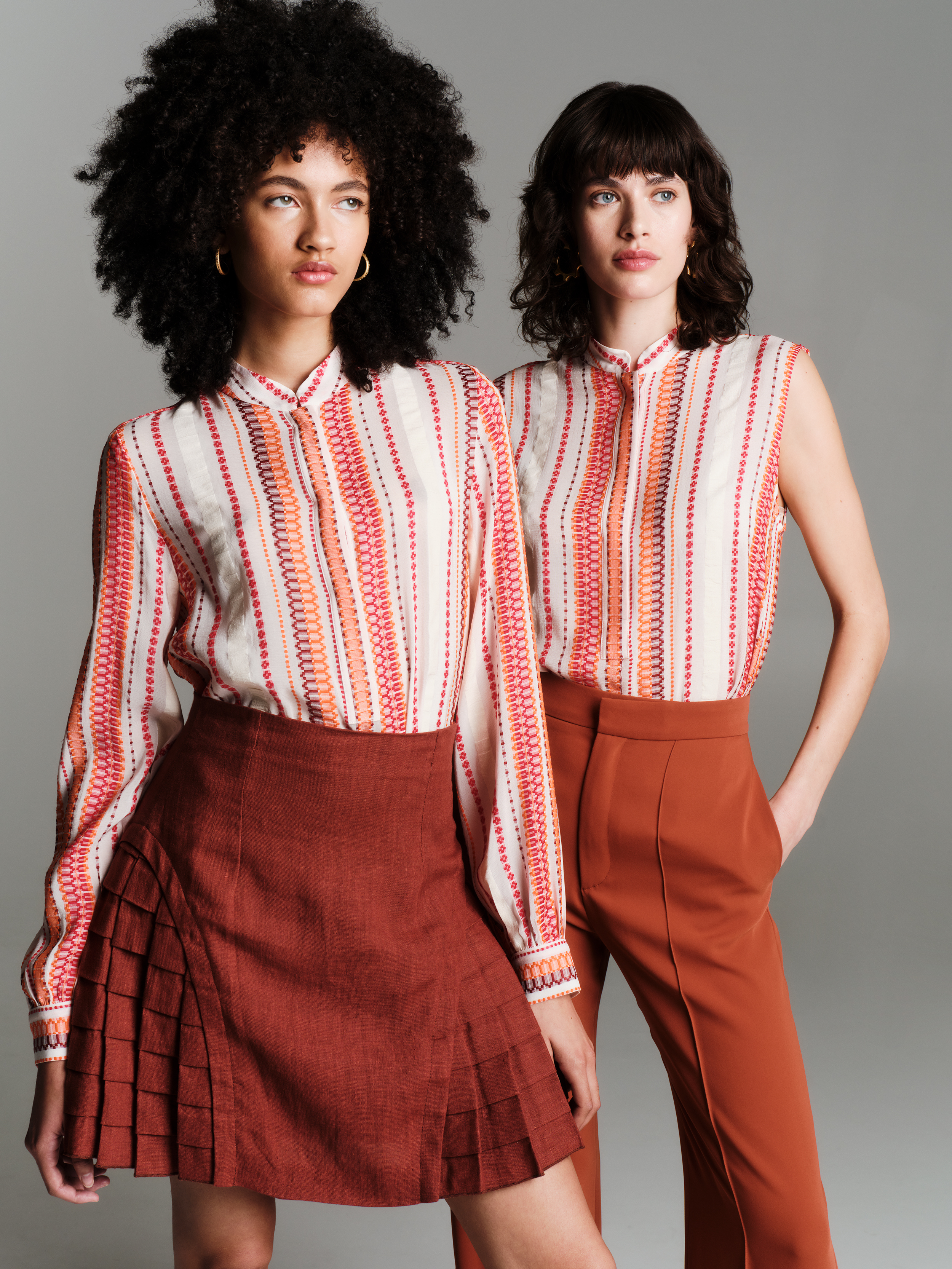1821- Our History interpreted in Fashion
Is it possible to imagine pleats and volumes without contemplating the 400 symbolic pleats of the kilt-like ’Fustanella’ garment, or artisanal finishes without harking back to those seen in traditional Doulamas coats? The year 1821 had a tremendous impact on shaping the story of modern Greece. It is the year when, after centuries of Ottoman rule, a rebellion erupted that subsequently led to the establishment of the country the way we know it now. The various illustrations depicting this period have been a substantial source of design inspiration for Greek fashion. To commemorate these historic events, we step inside some of our most current collections to rediscover concealed references to folk costumes. All of the pieces featured here are special keepsakes, preservers of vital fashion narratives that offer up something to think about for today.
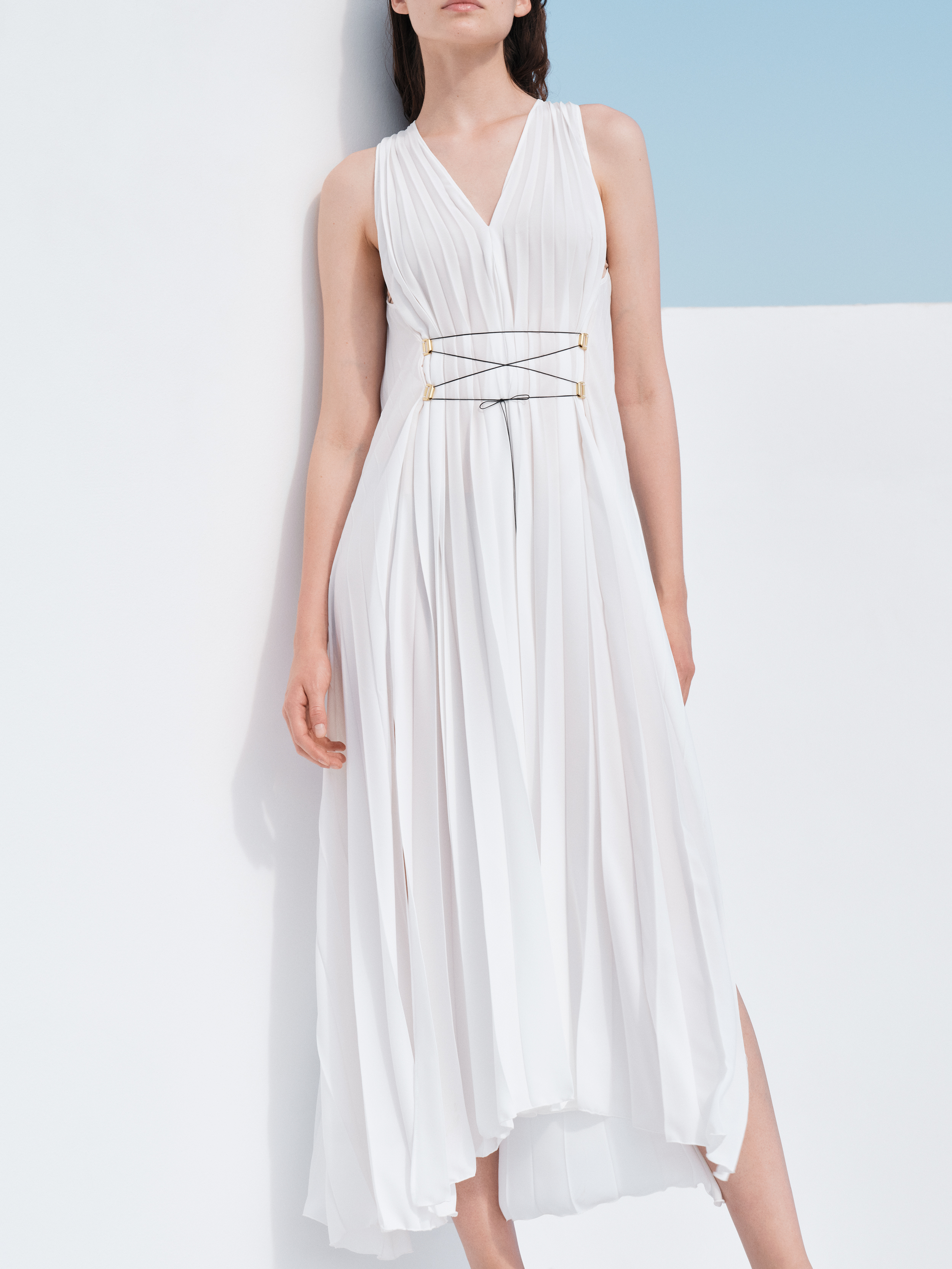
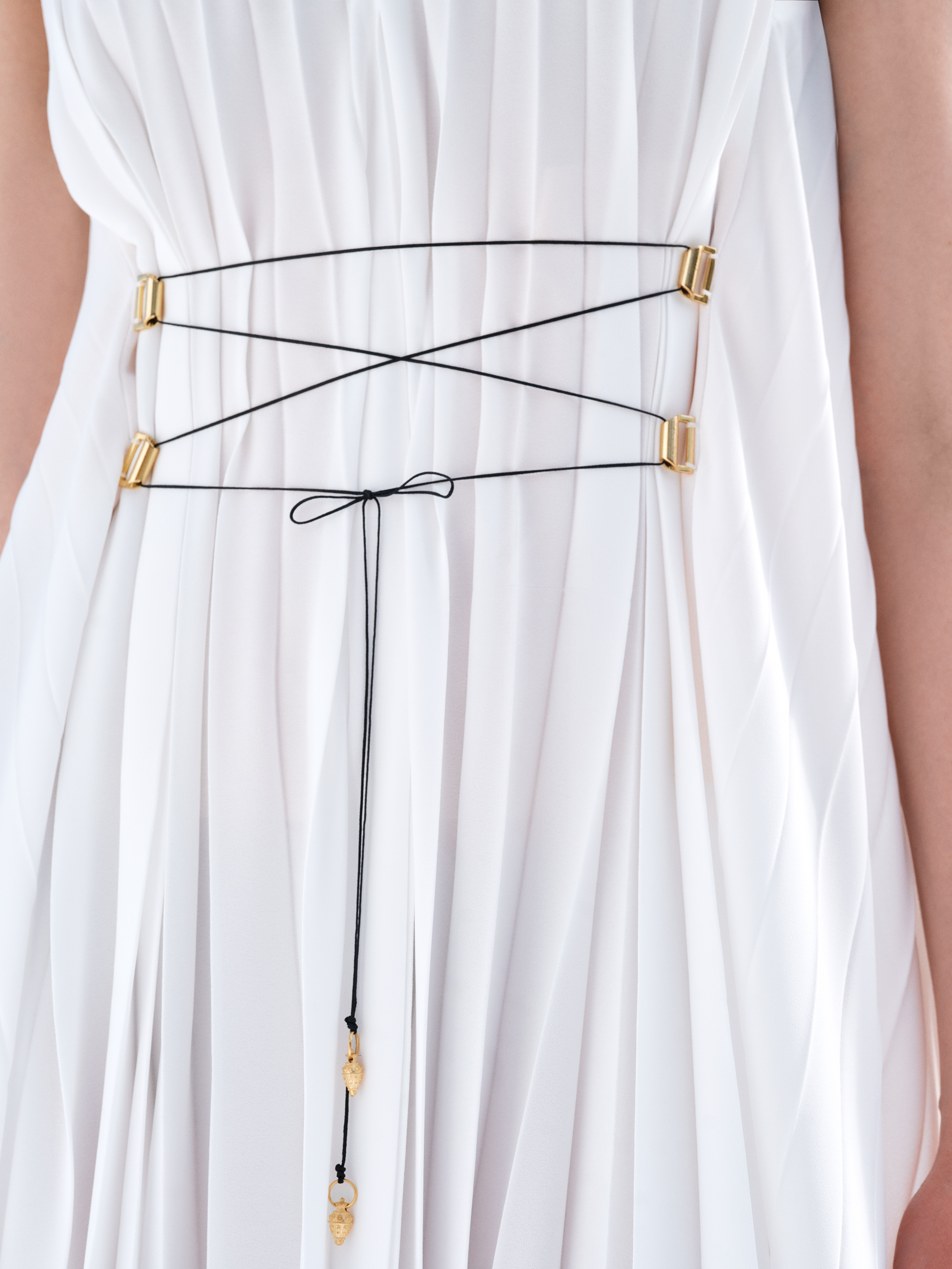
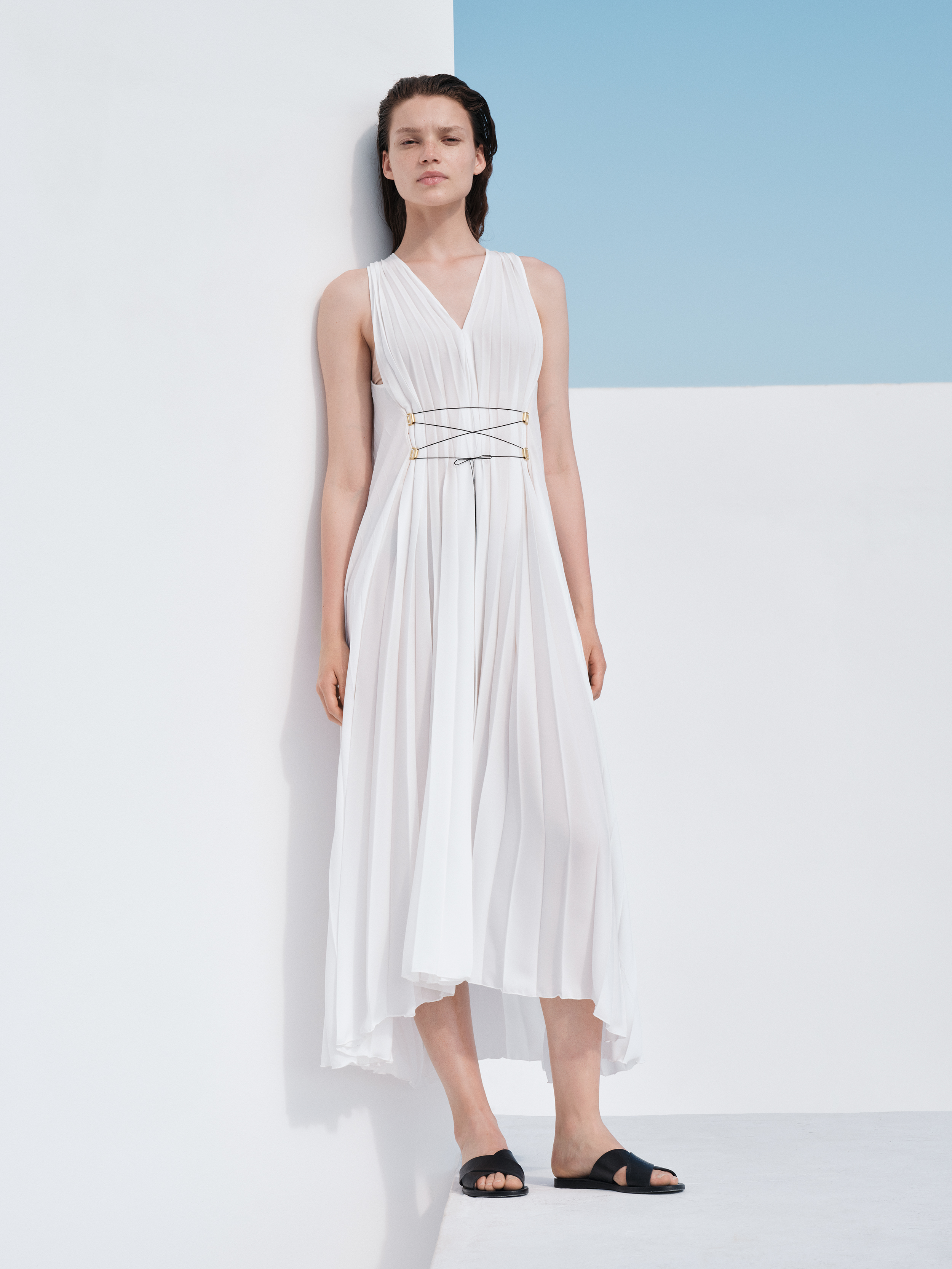

The “fustanella”-inspired pleated silhouette of the Esther dress
The volume of a pleated fustanella, a kilt-like garment with its 400 symbolic pleats representing the 400 years of Ottoman occupation, served as an inspiration for the Esther dress, which is made of ivory georgette fabric and pleated throughout, adding texture and movement. Worn by the emblematic Greek Evzones, the fustanella has come to be understood as a symbol of valiance, bravery, and resistance. Although its origins are widely contested by historians, archaeological evidence painted on vases from the Byzantine period shows the fustanella was in use in Greek territories in the 12th century AD whilst kilt-like garments were seen on sculptures found in the Attica region dating back to the 5th century BC.
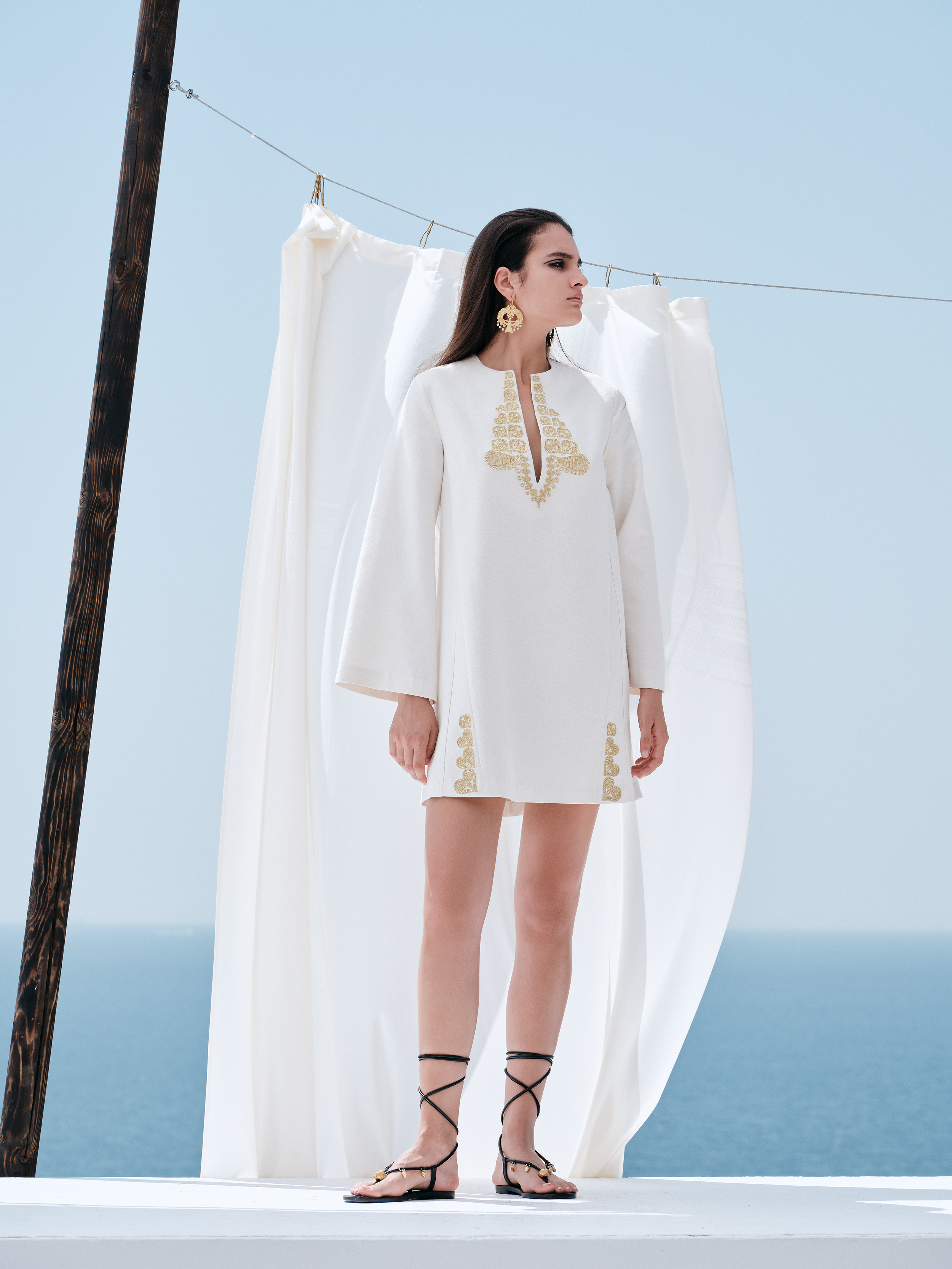
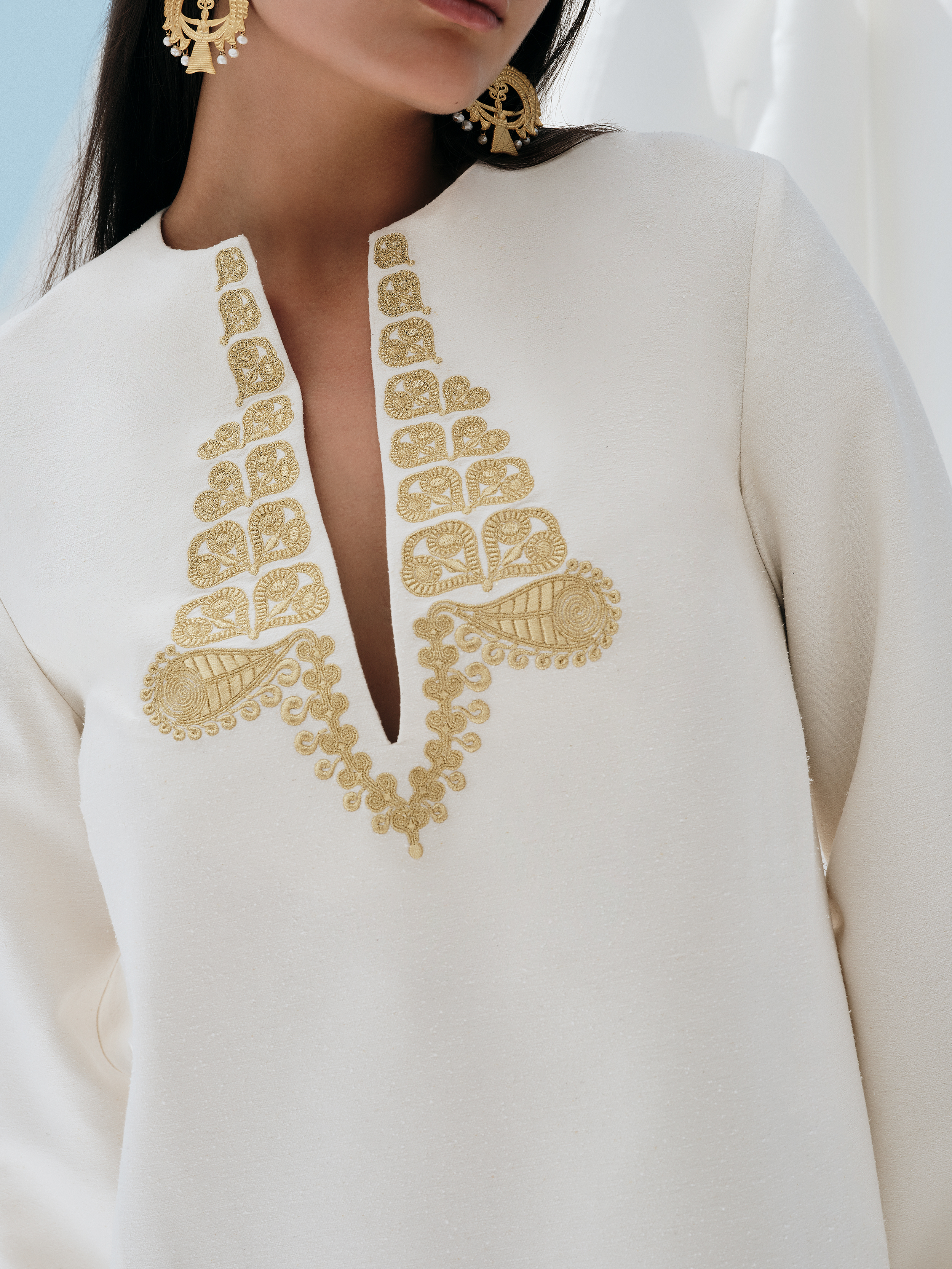
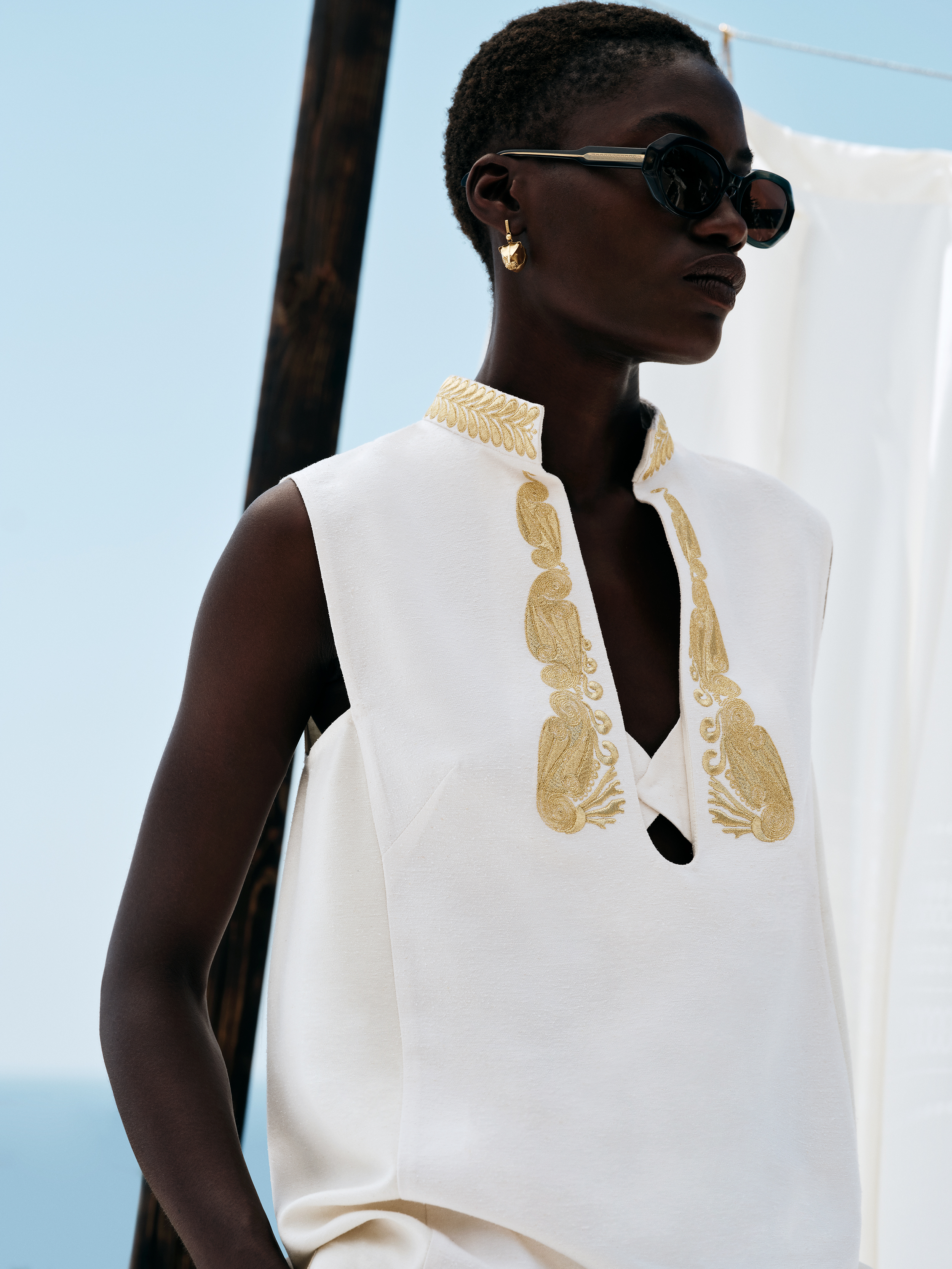
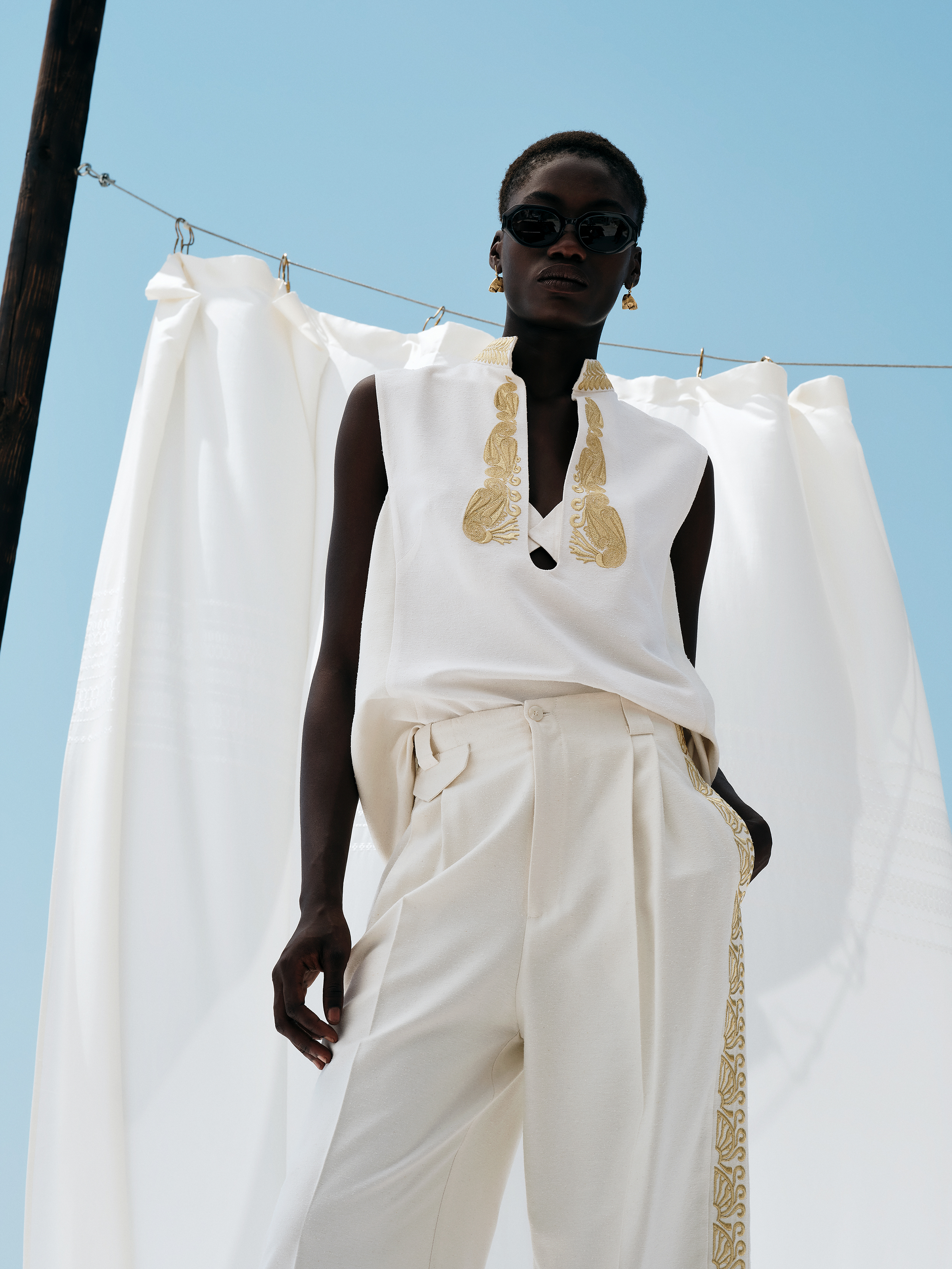
The handmade gold embroidery of the Anthea caftan and Rhea top
The structured and sleek looks of the Anthea caftan and Rhea top are rooted in craftsmanship. Cut from raw silk in ivory, they’re both decorated with gold artisanal embroidery of ornamental patterns, at the neckline and hem. Embroidery production flourished greatly in Greece from the 17th to the 19th century, during the period of Ottoman rule. These embroideries were woven by women –often offered as the bride's dowry-, using silk and gold thread (always coloured with natural dyes) on fine cotton. Greek embroidery is distinctive for borrowing motifs from different sources and combining them in rich variations. Each motif symbolizes something different and is part of an intricate and fascinating code derived from traditional costumes and centuries of history. These mixed influences, arising from the long and complex history of Greece and the Balkans – passing from the Byzantine era and various Western occupations to Ottoman rule – were assimilated and amalgamated into the character and lifestyle of local societies.
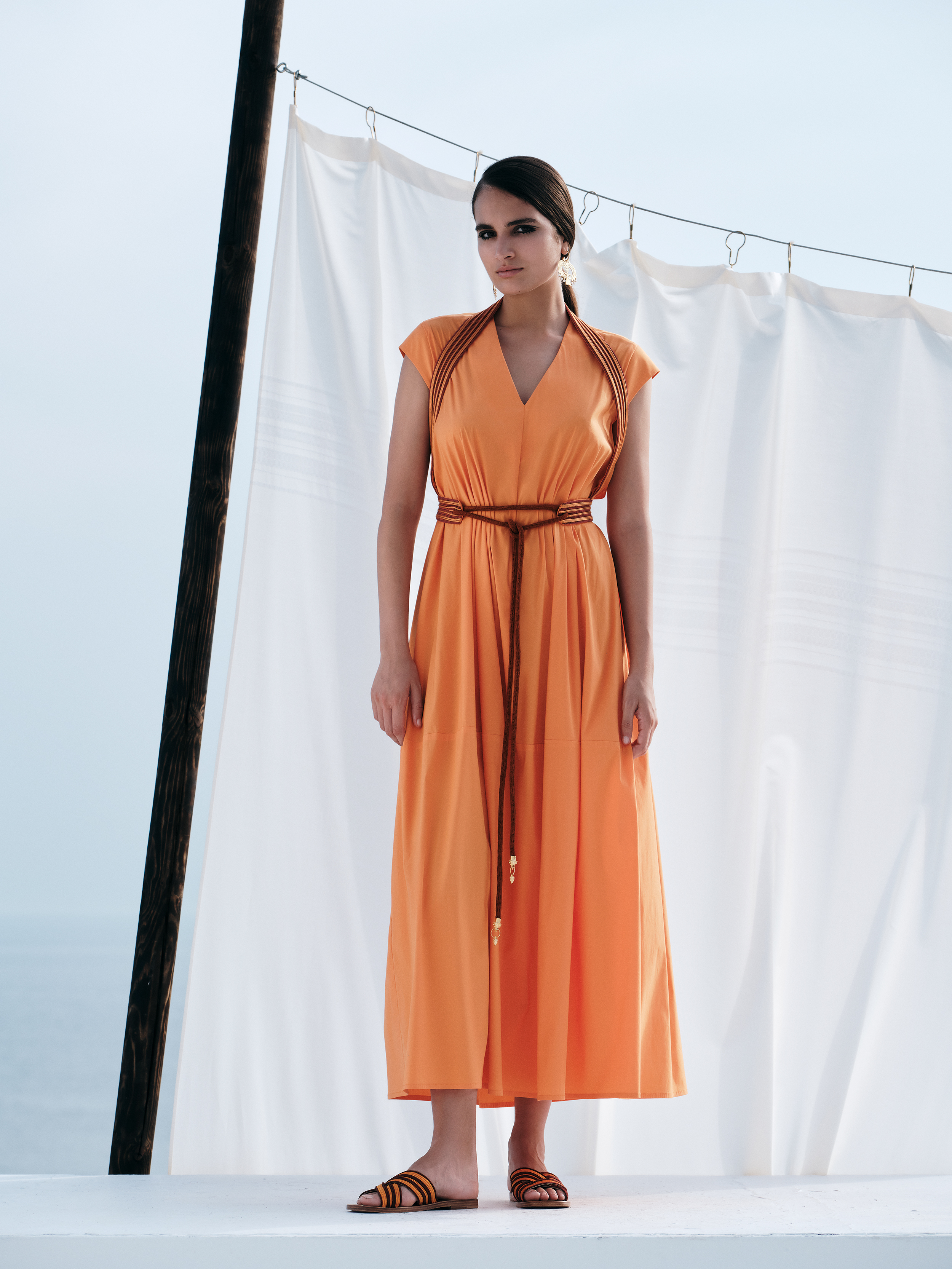
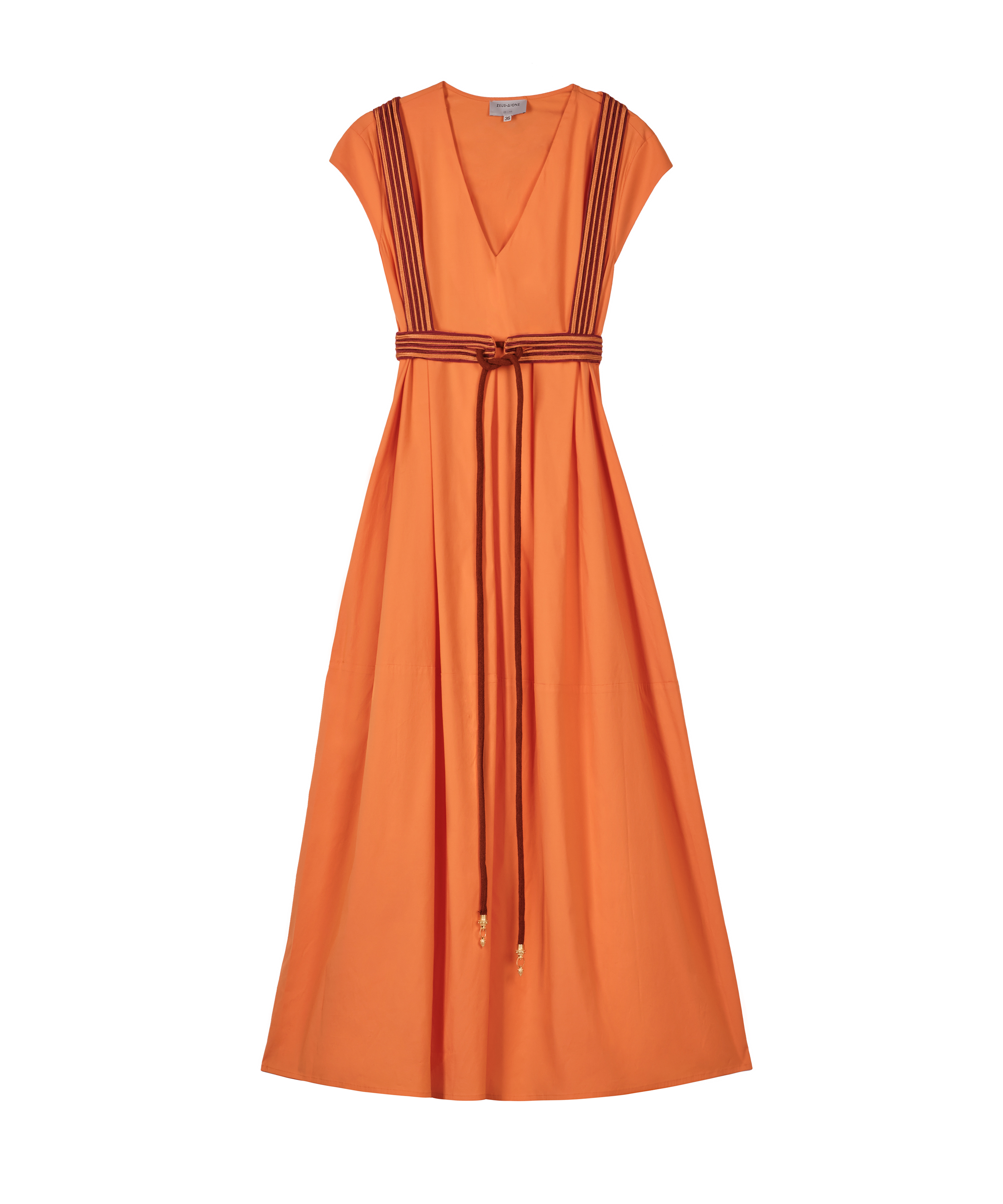
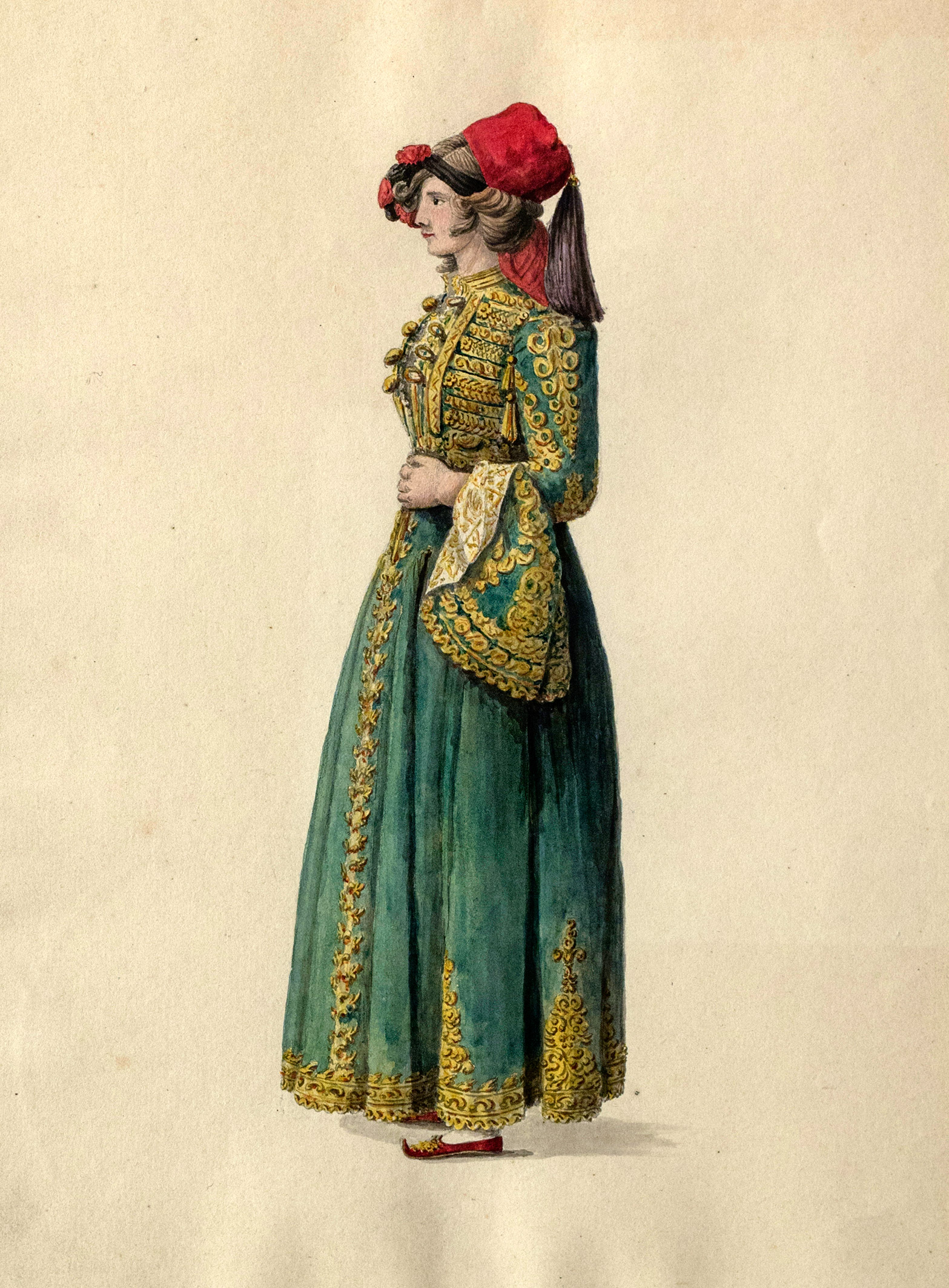
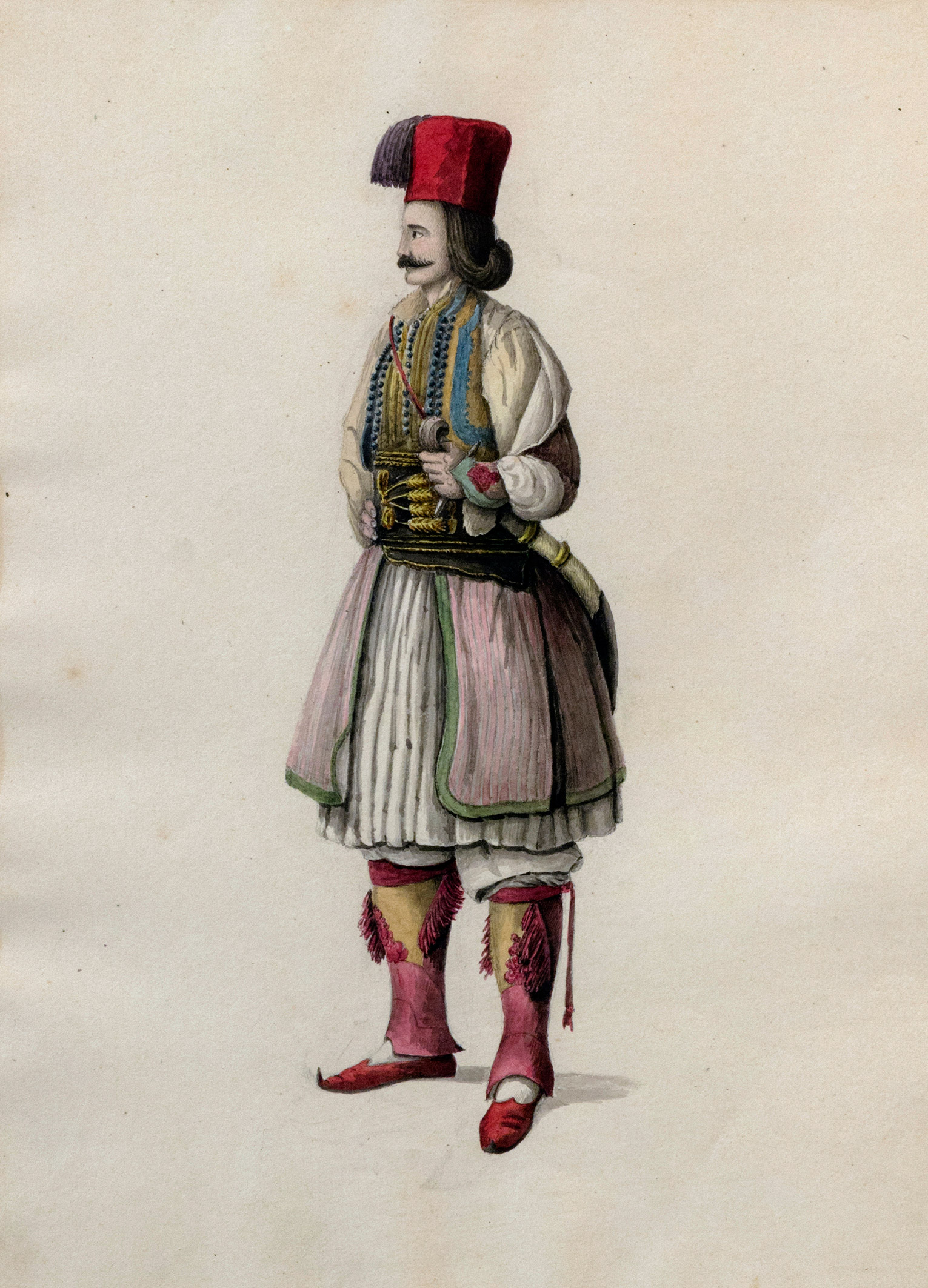
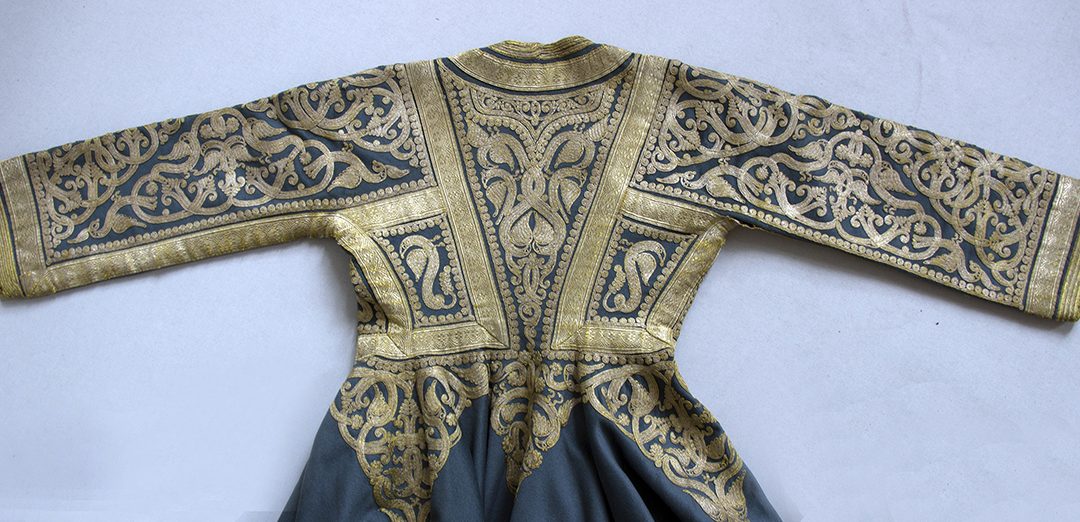
The “doulamas”-inspired artisanal finishes of the Thysano dress
Cut from jersey in an orange clay hue, the Thysano dress has a fitted sleeveless silhouette defined by a tasseled, embroidered, corset-inspired belt, which is a nod to the traditional Balkan doulamas coats’ striped finishes. In the Turkish dictionary “dolama” means wrap. The doulamas was an exceptional garment worn by men and women, during the Ottoman Empire Period, presenting geographical class and other interesting variations. Its summer version is similar in design to the field uniform adopted by the Evzones regiments and the ceremonial Presidential Guard today. A garment made with great skill and precision, that originates in the past but still inspires!
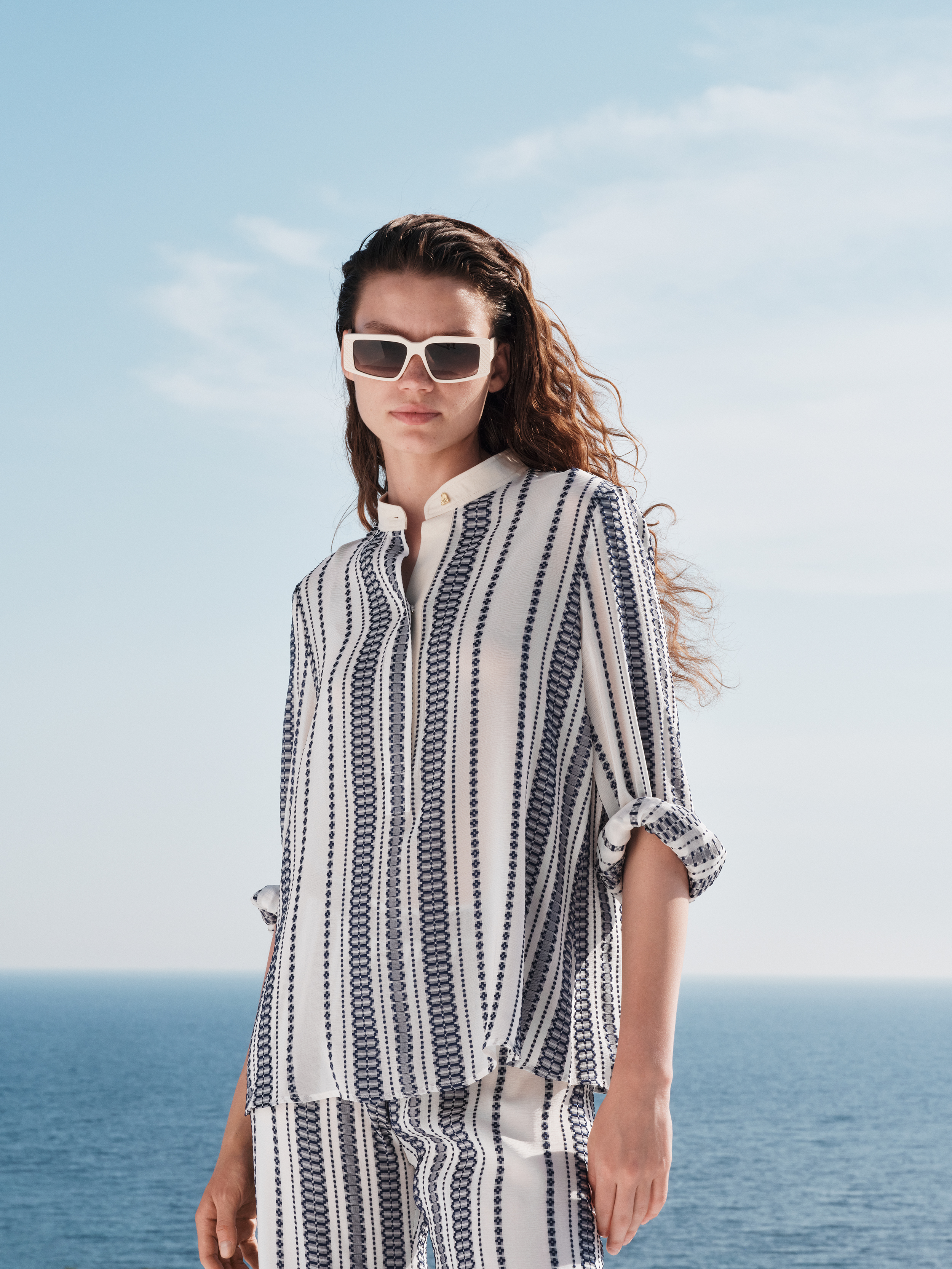
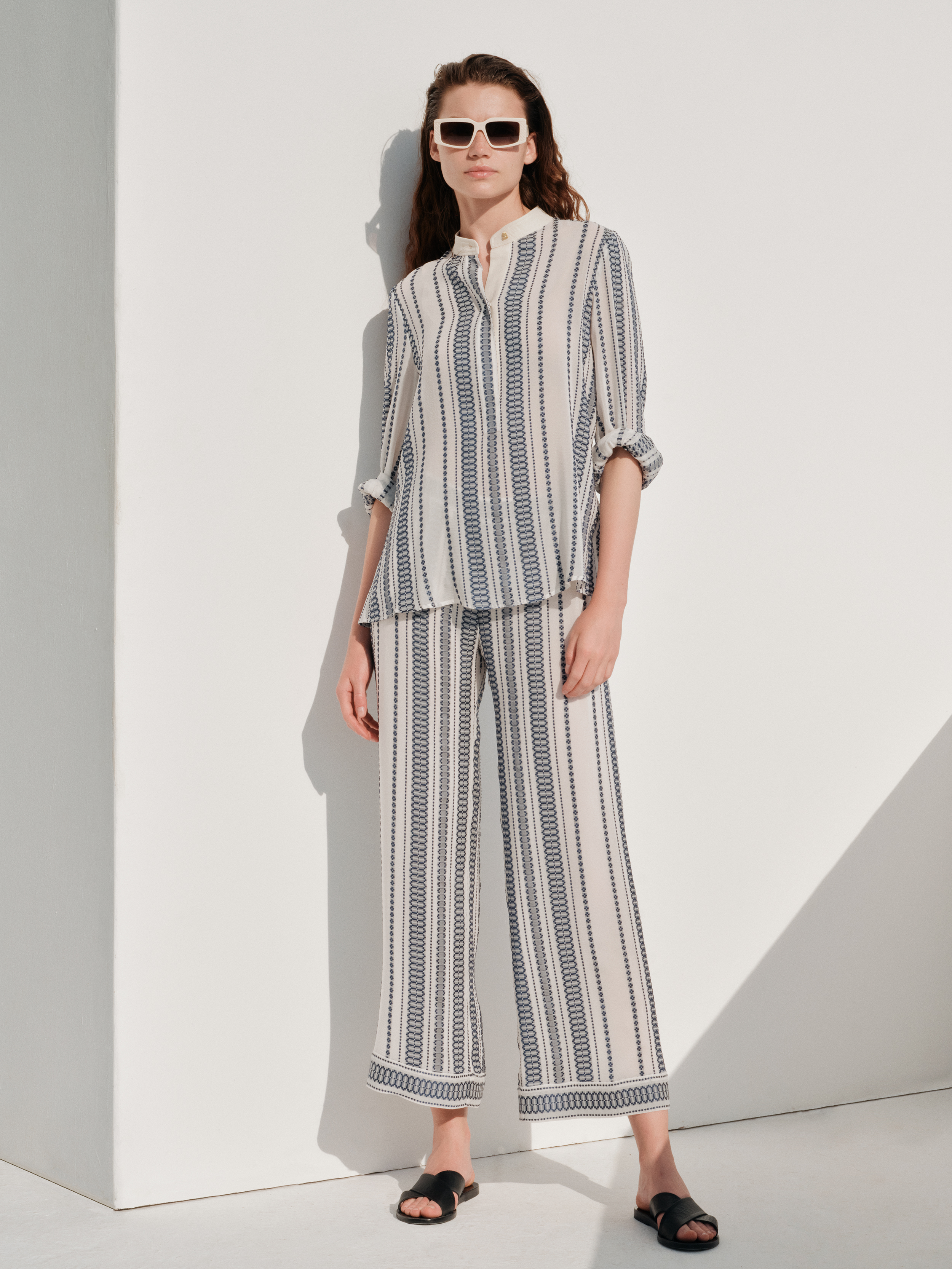
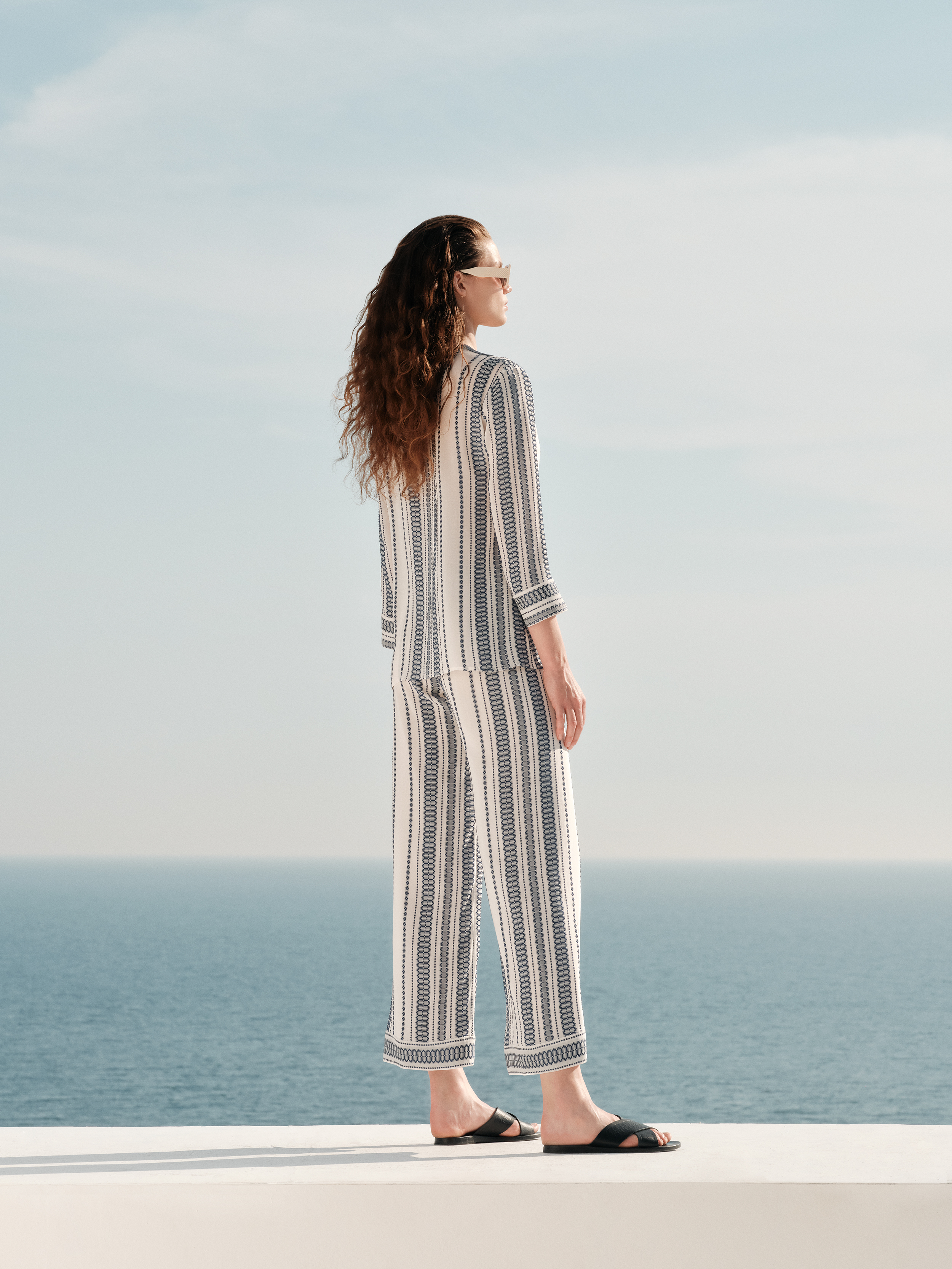
The navy & ivory colour palette of the Hera blouse and Abaton trousers
The Zeus+Δione signature "spathoto" silk is woven on an ivory base with navy stripes, taking its cues from the original colour of the Greek flag along with its contemporary counterpart. Blue and white are the national colours of Greece, as blue symbolizes the sky and seas and white denotes the purity of the Greek independence struggle. Because of the use of the word 'cyan' (Greek: κυανός, Kyanos), which can also mean 'blue' in Greek, the exact shade of blue remains ambiguous. Although it implies the use of a light shade of blue.
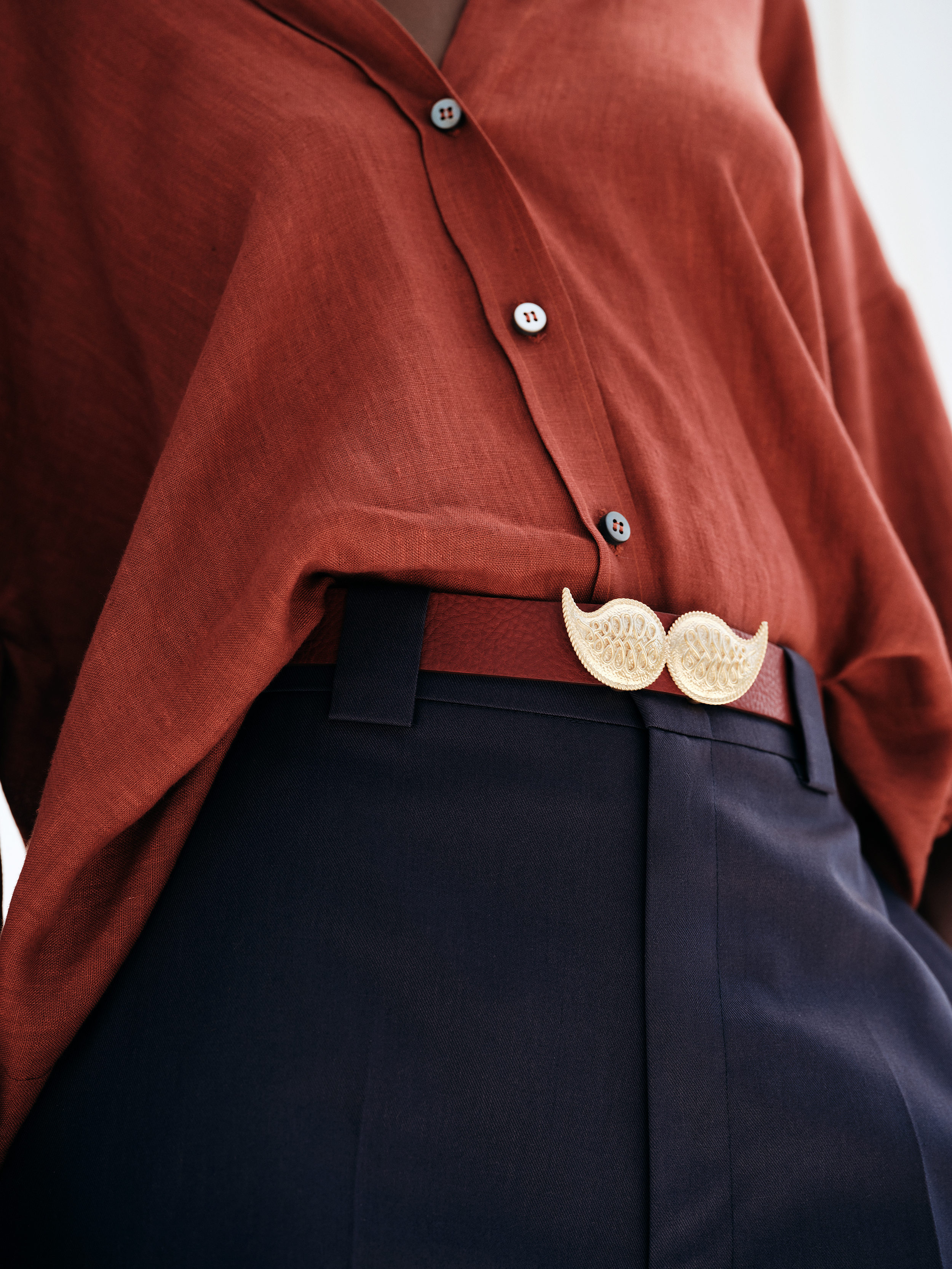
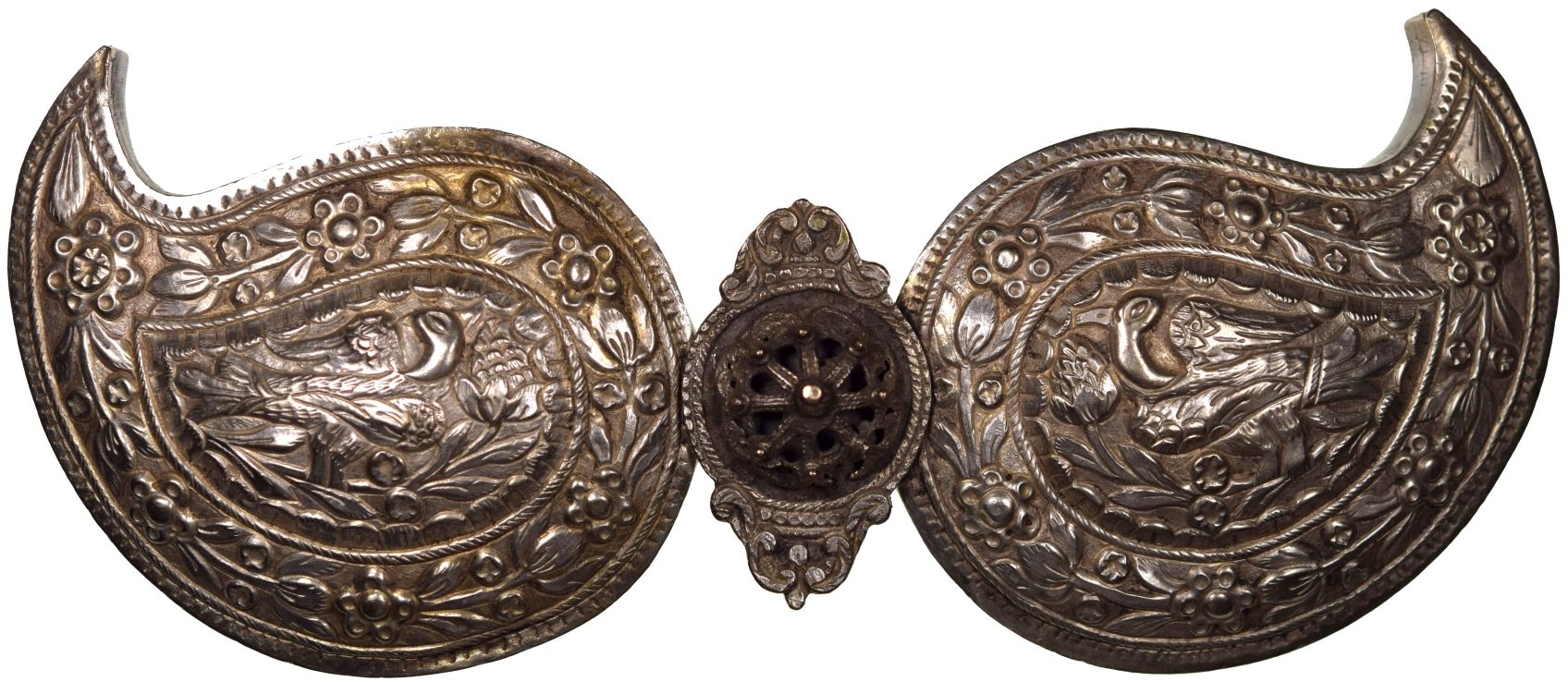
The gold-plated “porpi” of the Anthemis belt
The ‘Anthemis’ belt’s slim design is topped with two mirrored gold-tone paisleys, an ornament inspirited by “Porpi” (Fibula - buckle), a jewel–part of the Greek folklore costume that was worn around the woman's waist joining the two ends of the belt. The most popular buckles, the Epirotic ones, were made using the repoussé technique and were decorated with the usual traditional motifs such as roses, rosettes and paisleys. The construction material was silver and had taken its golden shade by sandblasting. In the Greek tradition the silver “Porpi” was one of the basic dowries of the bride and was mentioned in various folklore songs.
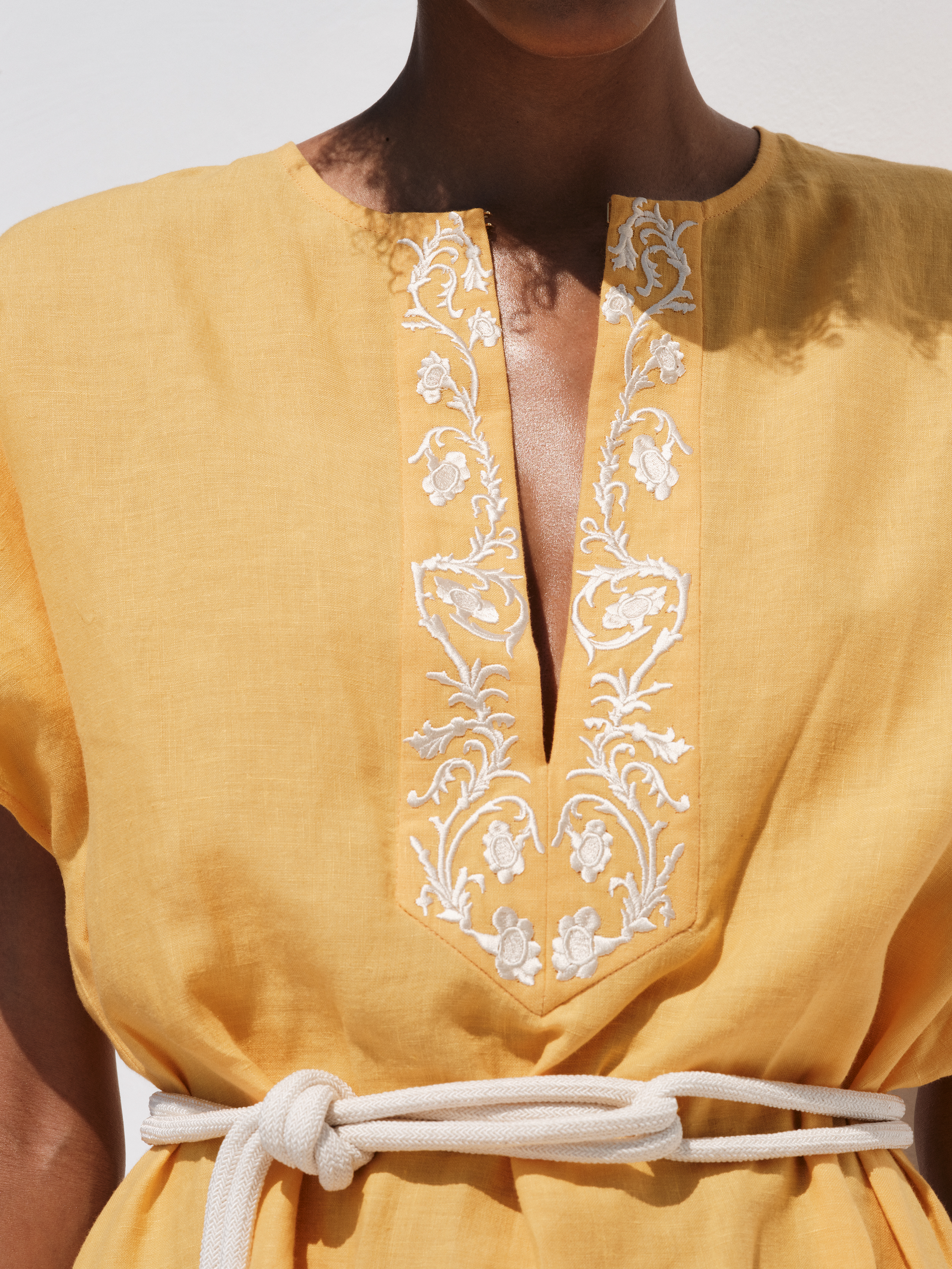
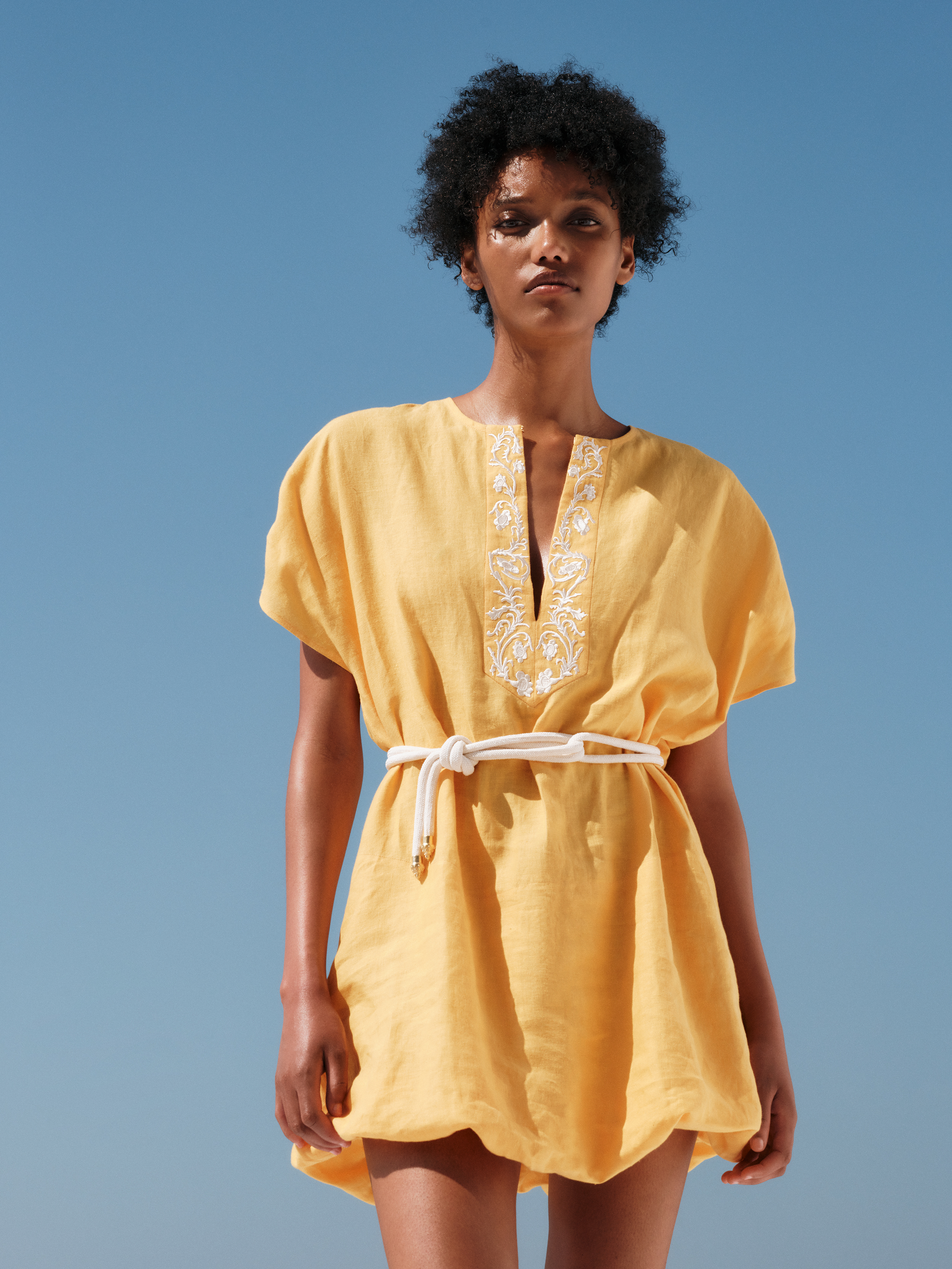
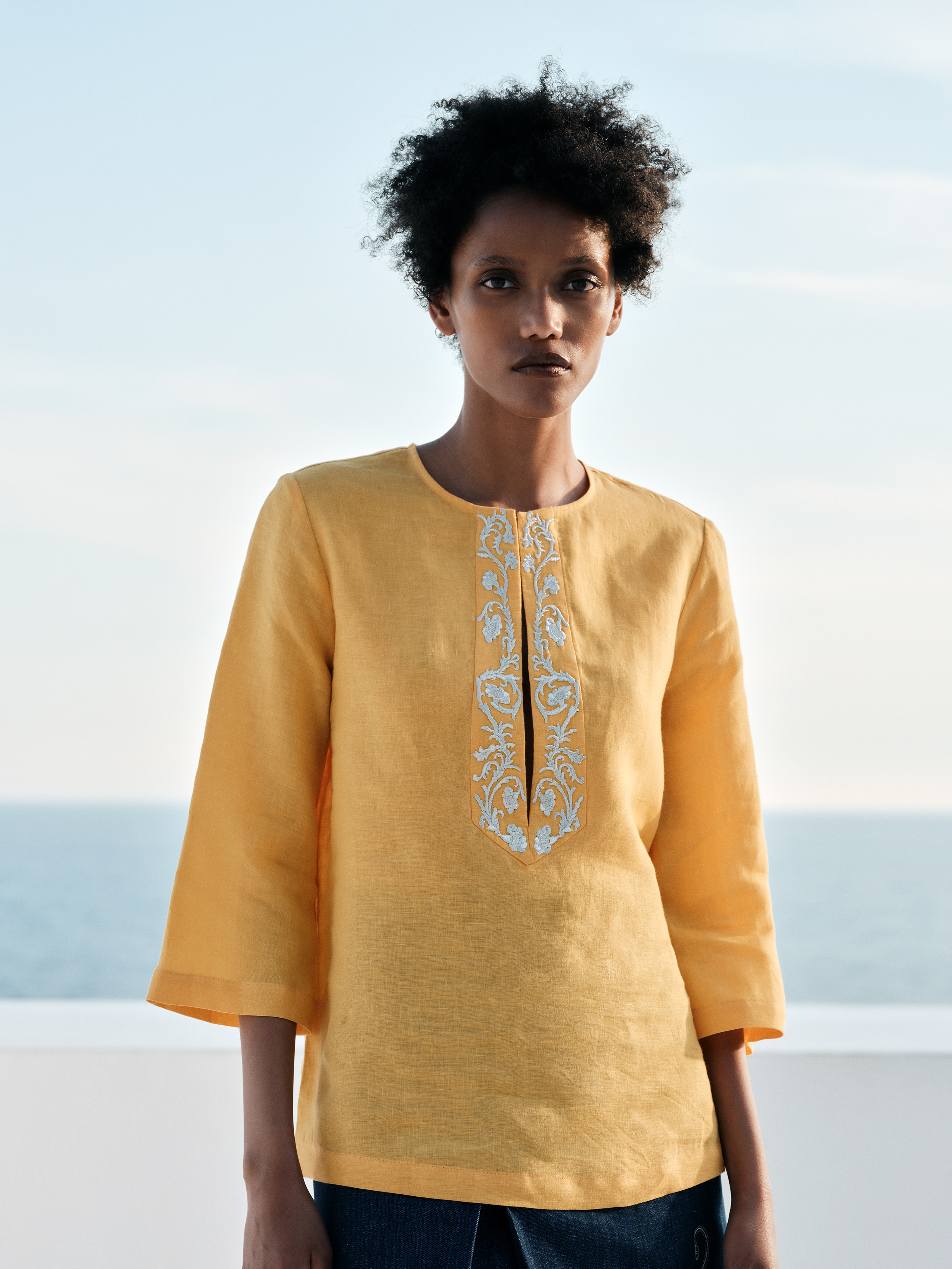
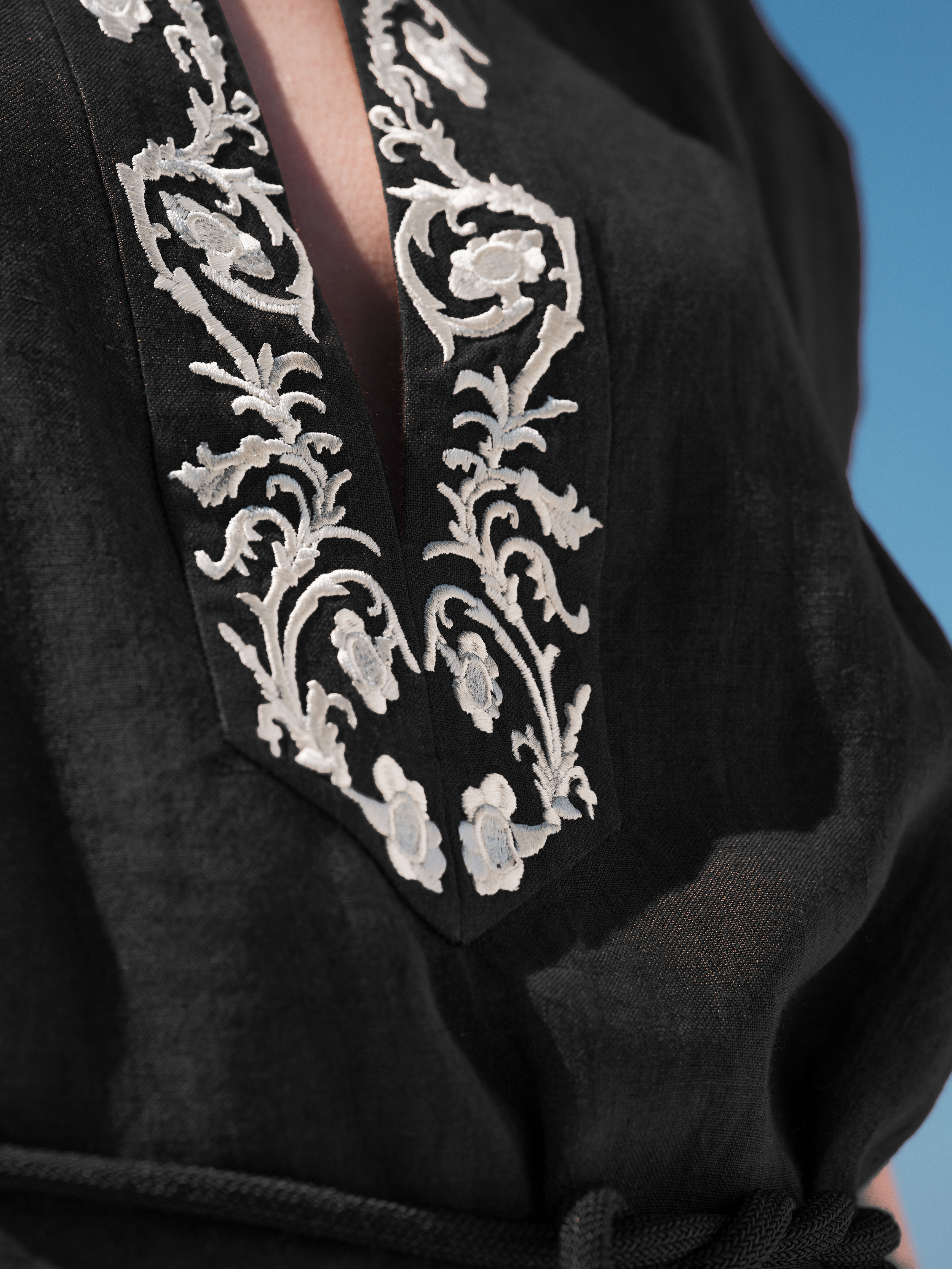
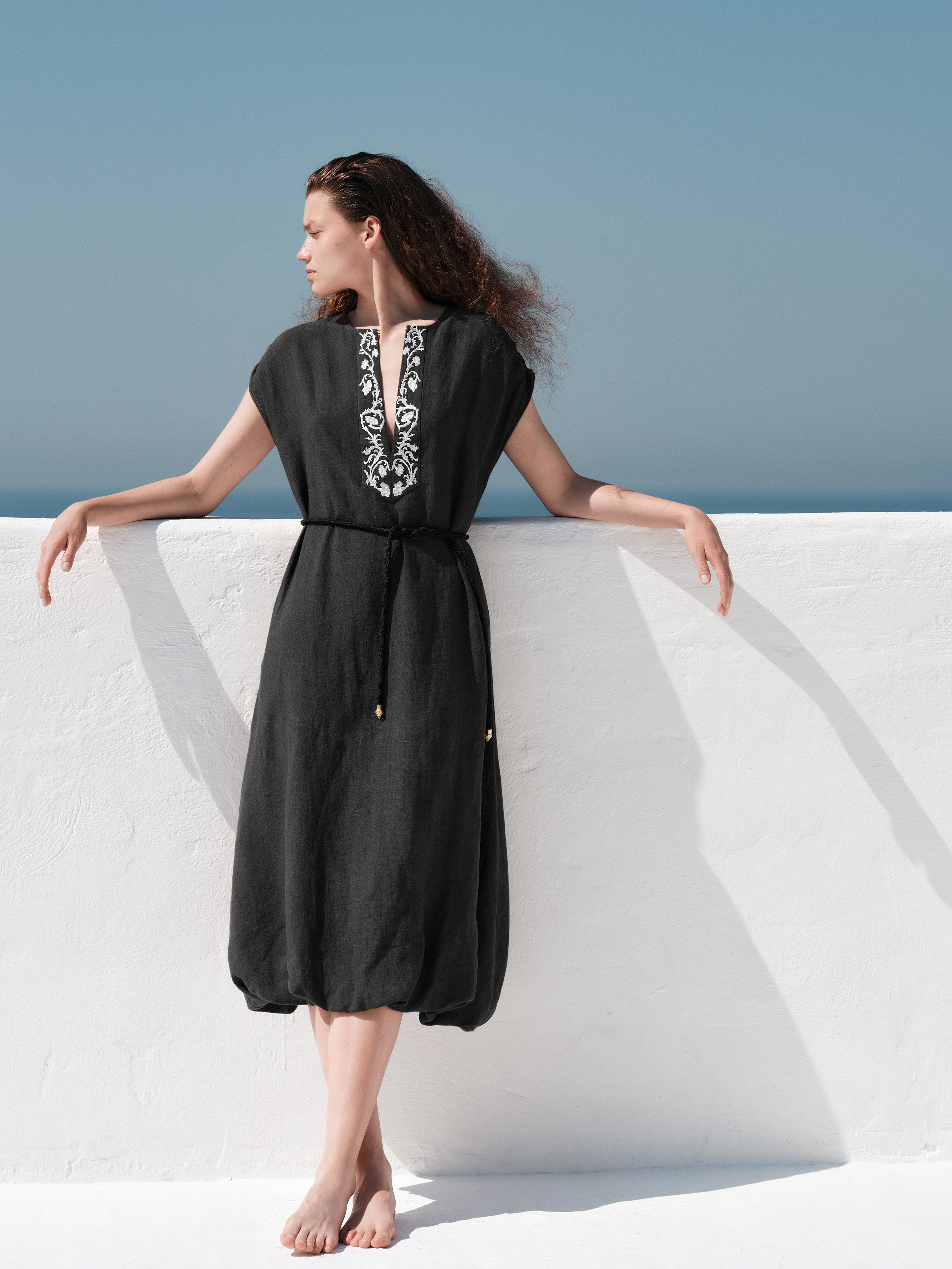
The flowery embroidery of the Oracle caftan and Sapfo blouse
Cut from pure linen, the 'Oracle' caftan and ‘Sapfo’ blouse, are intricately embroidered at the yoke with blooms. Similarly, the neckline, hemline and cuffs of the Athenian ‘Amalia’ Costume’s jacket were often lavishly embroidered with stylized flowers, an elaborate combination of symmetrical spiralling motifs and flowering branches and flower ornaments, which were stylized in geometric patterns.
